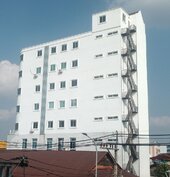Disclaimer: I currently work for a Carrier distributor in IT. I read things and talk to sales droids so I happen to know about these units. It is without a doubt the best one on the market, at least, as long as you don't ask the Trane guys about theirs, or the ...

Every major HVAC vendor has a variation of these units, Trane, Goodman, etc. This is the future of Central air and will put the likes of MicroAir out of business at some point. Technology just keeps rolling along. Somehow people think the technology of a mini-split only exists in a mini-split. The big SEER advantage is the elimination of the ducting, but you stuff 20 mini-splits in your house, in 10-15 years you have 20 problems instead of one. Just don't fall into a trap, a mini-split can be a huge win as well depending on the application, but again, there is a reason we didn't stick with window units which are also more efficient.
So Carrier for example. . .
View attachment 223333
Mini-splits are attractive because of the cost, but they ain't the same as central air conditioning.



